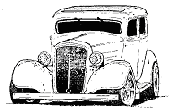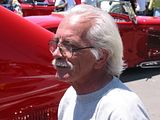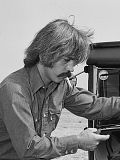 |
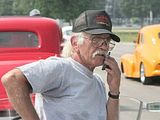 |
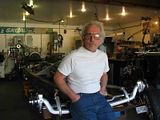 |
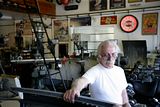 |
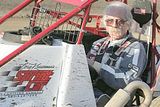 |
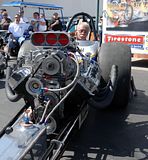 |
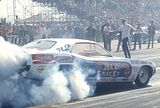 |
 |
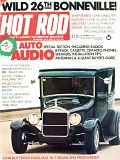 |
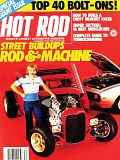 |
 |
John Buttera
(1939-2008)
The Wisconsin native, who made his name in Southern California's racing culture, is credited with a key engineering advance that helped him create sleeker, lighter autos. By Valerie J. Nelson, Los Angeles Times Staff Writer March 11, 2008
John Buttera, a trend-setting builder of hot rods and race cars whose minimalist designs and mechanical ingenuity influenced racing for decades, has died. He was 68. Buttera died March 2 of complications from brain cancer at Los Alamitos Medical Center, said his friend Kevin Bell.
Don Prudhomme, a drag-racing legend who won several national events in a Buttera-built car, told The Times, "You couldn't help but admire him. He was the best. Not only was he an innovator, he just did things that other chassis builders didn't do."
Prudhomme recalled how "this guy from Wisconsin" showed up in California -- the hotbed of racing -- with a car he built for Mickey Thompson that was "the coolest thing I'd ever seen."
The engineering and craftsmanship were unmatched, said Prudhomme, who still owns one of the Buttera cars he drove -- a 1972 Mattel Hot Wheels Plymouth Barracuda.
"Everybody we raced wanted to see the Buttera car," he said. "Guys lined up at his door to get one."
Brad Fanshaw, president of Bonspeed Wheels, called Buttera "an absolute genius who reinvented whatever he touched. He didn't just make it more beautiful; he revolutionized almost anything he got involved in."
Buttera is credited with being the first to carve customized racing car parts out of aluminum blocks known as billets, an engineering leap that helped him create sleeker, lighter hot rods. A craze for billet parts took off in the 1980s and is still evident in racing today.
In 1976, Buttera built a Model A roadster that was the first hot rod to extensively use machined billet-aluminum components, according to a history of hot rodding on the website How Stuff Works. The car stood out for its suspension components and exterior parts such as side mirrors made from aluminum. It also pushed design forward for another reason -- it was devoid of chrome.
"Billet turned into probably the biggest thing in hot rodding since the tire," the history recounted.
The first billet part Buttera fabricated was a rearview mirror he made for a friend, influential hot rod designer Boyd Coddington, who died Feb. 27, four days before Buttera.
When asked how he did it, Buttera reportedly replied: "That's easy -- just cut away everything that doesn't look like a rearview mirror."
The Buttera-Coddington partnership also resulted in a three-piece billet wheel that is credited with launching the big business of aftermarket high-end aluminum wheels. The revolution prompted Coddington to found a company that manufactured wheels. Coddington, who was the more famous of the pair, was more interested in the business side of racing, Bell said.
"John doesn't get enough credit for all he's done in the racing industry. He would do one piece and say, 'I don't want to make more.' He was like an artist who would do one painting and move on," Bell said.
Buttera and Coddington became known for their skills at fabricating hot-rod parts that gave their cars a highly finished, professional look. Buttera signed his automotive creations, incorporating the nickname given him to differentiate him from an uncle whose name he shared: "Built at Lil' John's Place."
Buttera said the most exciting thing he ever did was build a car that raced in 1982 at the Indianapolis 500.
"The first time I saw my car come out of Turn Four at Indianapolis . . . I had goose bumps all over me. I couldn't talk; I was crying," Buttera told the Orange County Register in 1995.
Dennis Firestone drove it to a 27th-place finish.
Buttera had accomplished something "very few hot rod or drag race people had done before or since," said Harry Hibler, former publisher of Hot Rod and Car Craft magazines. "He did it without sponsorship to speak of . . . and by calling in a lot of favors from friends."
He attempted Indianapolis twice more, in 1984 and 1987, but a crash and mechanical problems sidelined the cars.
Buttera, born in 1939 in Kenosha, Wis., began building dragsters there. A chance meeting with racing's Thompson led to his 1968 move to California.
Buttera opened a chassis shop in Cerritos and soon had a roster of drag-racing clients that included Tom McEwen, Don Schumacher and Shirley Muldowney.
More recently, Buttera did extensive development work for Harley-Davidson motorcycles. In 2004, he returned to building hot rods out of his Los Alamitos garage.
Friends and colleagues invariably described Buttera as "a character."
"He had a gruff exterior but a very kind demeanor once you got to know him," Fanshaw said. "You just had to get through that outer wall."
Buttera is survived by his son, Chris, daughter, Leigh, and two grandchildren.
